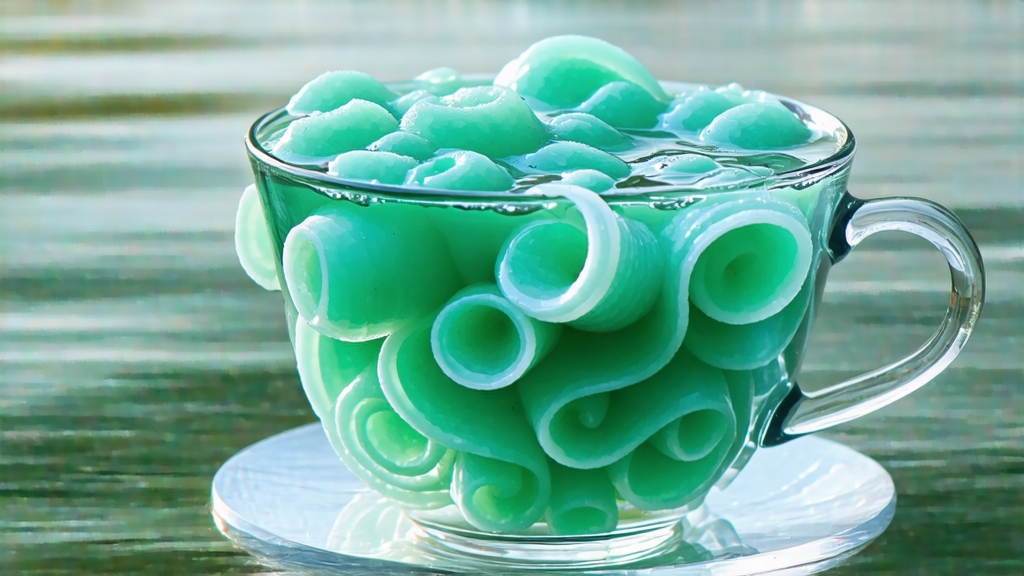
If green tea were a language, Biluochun would be its most delicate dialect—soft, lilting, and impossible to forget once heard. Known in Chinese as “Green Snail Spring,” the name alone conjures an image of tiny jade spirals that resemble the whorls of a freshwater shell. Yet behind the poetic name lies a 1,200-year-old story of imperial favor, Buddhist monks, and a lake so fertile that even the mist smells of ripe fruit. For the international drinker accustomed to the grassy snap of sencha or the buttery calm of matcha, Biluochun offers a different grammar of taste: a whisper of peach skin, a flicker of white pepper, and a finish as clean as April rain on slate.
Origin Myth and Imperial Fame
Legends place the birth of Biluochun on Dongting Mountain, a pair of forested islands that rise from Taihu Lake in Jiangsu Province. During the late Tang dynasty, a nun named Lingji is said to have noticed wild tea trees perfumed by surrounding peach, plum, and apricot groves. She plucked the tender apexes, pan-fired them in an iron wok, and rolled the leaves between her palms until they curled like fern fronds. The infusion astonished traveling merchants, who carried the tea to Suzhou’s canals and, eventually, the Qing court. In 1699 the Kangxi Emperor tasted it during a southern inspection tour, praised its “bi lu se” (jade-green color) and “luo chun xing” (snail-like shape), and christened it Biluochun. Imperial patronage turned a local curiosity into a tribute tea, carted north each spring in bamboo-lined chests cushioned with silkworm floss to keep the aroma intact.
Microclimate and Terroir
Dongting Mountain is not tall—its highest peak barely reaches 340 m—but it is an island ecosystem floating in a lake the size of Luxembourg. The water mass moderates temperature, creating a mist that lingers until noon and filters sunlight into a soft, diffused glow. Average humidity hovers around 80 %, ideal for slow amino-acid synthesis that heightens sweetness. The soil is a crumbly granite loam laced with decomposed bamboo leaves, slightly acidic (pH 5.2–5.7) and rich in zinc and selenium. Wild fruit trees drop their petals onto tea bushes, and their root systems intermingle, allowing subtle floral volatiles to migrate into the leaf. The result is a tea that carries natural notes of peach and apricot without any added flavoring—an agricultural miracle that French vignerons would call terroir.
Cultivars and Picking Standards
Although the original landrace is still propagated by seed, clonal selections such as Dongting #1 and #7 have been released since the 1980s to improve yield and cold tolerance. Regardless of cultivar, only the standard “one bud with one unfolding leaf” is plucked, a unit that Chinese graders nickname “sparrow’s tongue.” The ideal leaf length is 1.5–2 cm; anything larger is diverted to cheaper grades. Picking begins when overnight temperatures stabilize above 10 °C, usually between the Qingming and Grain Rain solar terms (early April). A skilled picker can harvest 600 g of fresh leaf in a day, but that shrinks to 120 g after firing—five kilograms of buds are needed for one kilogram of finished tea.
Crafting the Spiral: Eight Hours to Immortality
Within thirty minutes of plucking, the leaf is spread in bamboo trays no thicker than 2 cm and withered for 2–3 hours in shaded draft. The goal is not oxidation (green tea is enzyme-deactivated) but gentle moisture loss, reducing leaf weight by about 10 %. Next comes the kill-green step, performed on woks heated to 180 °C. The tea master tosses the leaves with a rhythmic clatter, pausing only to test the temperature by sprinkling water and listening for the correct sizzle. After four minutes the leaf turns jade, its grassy notes replaced by a chestnut sweetness. Immediately the wok temperature is lowered to 70 °C and the shaping begins. Using only the heel of her palm, the master presses and rubs the leaves along the wok’s curved wall, coaxing them into tight spirals. Each spiral must curl 6–8 times; fewer and the tea looks